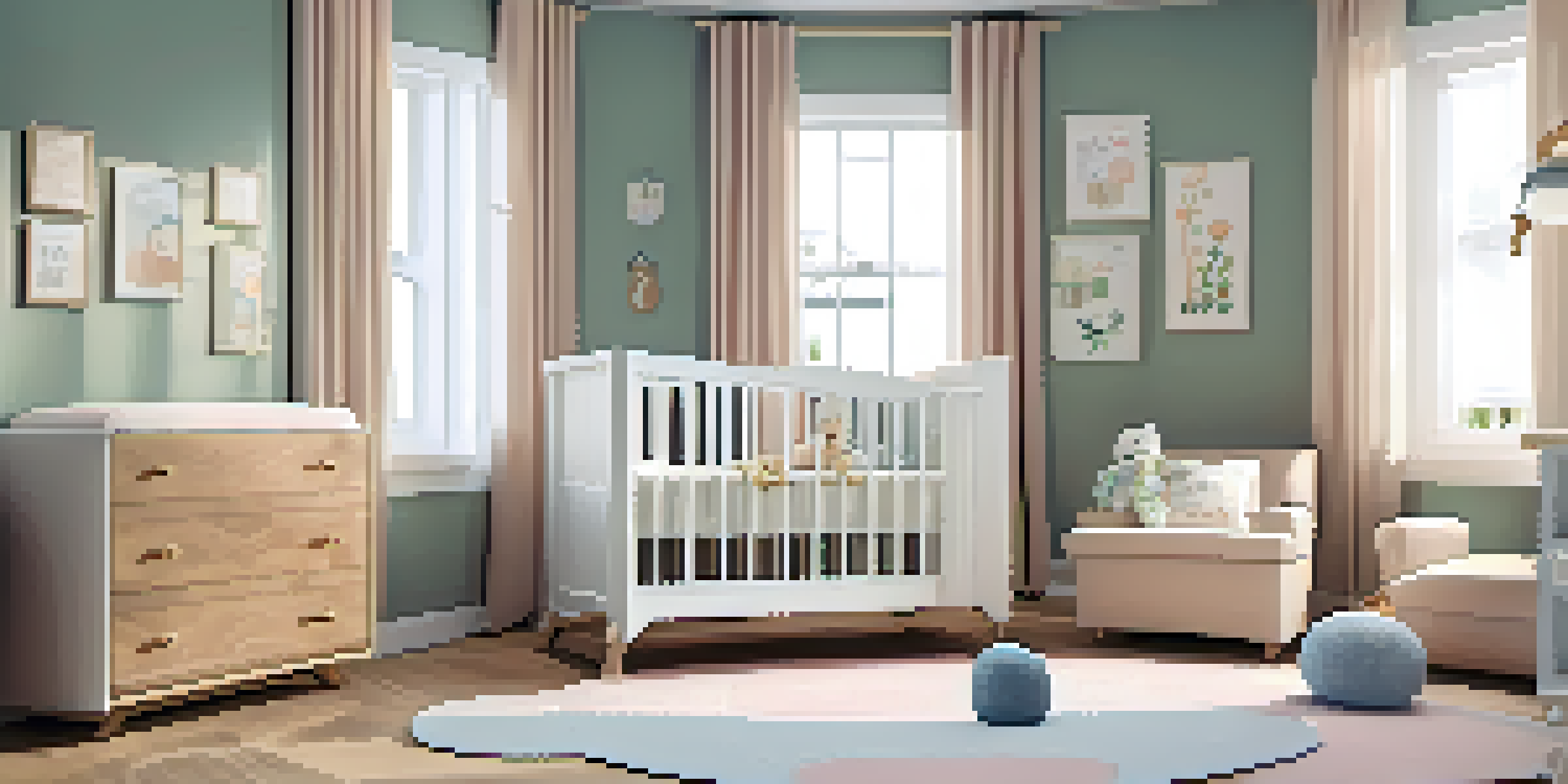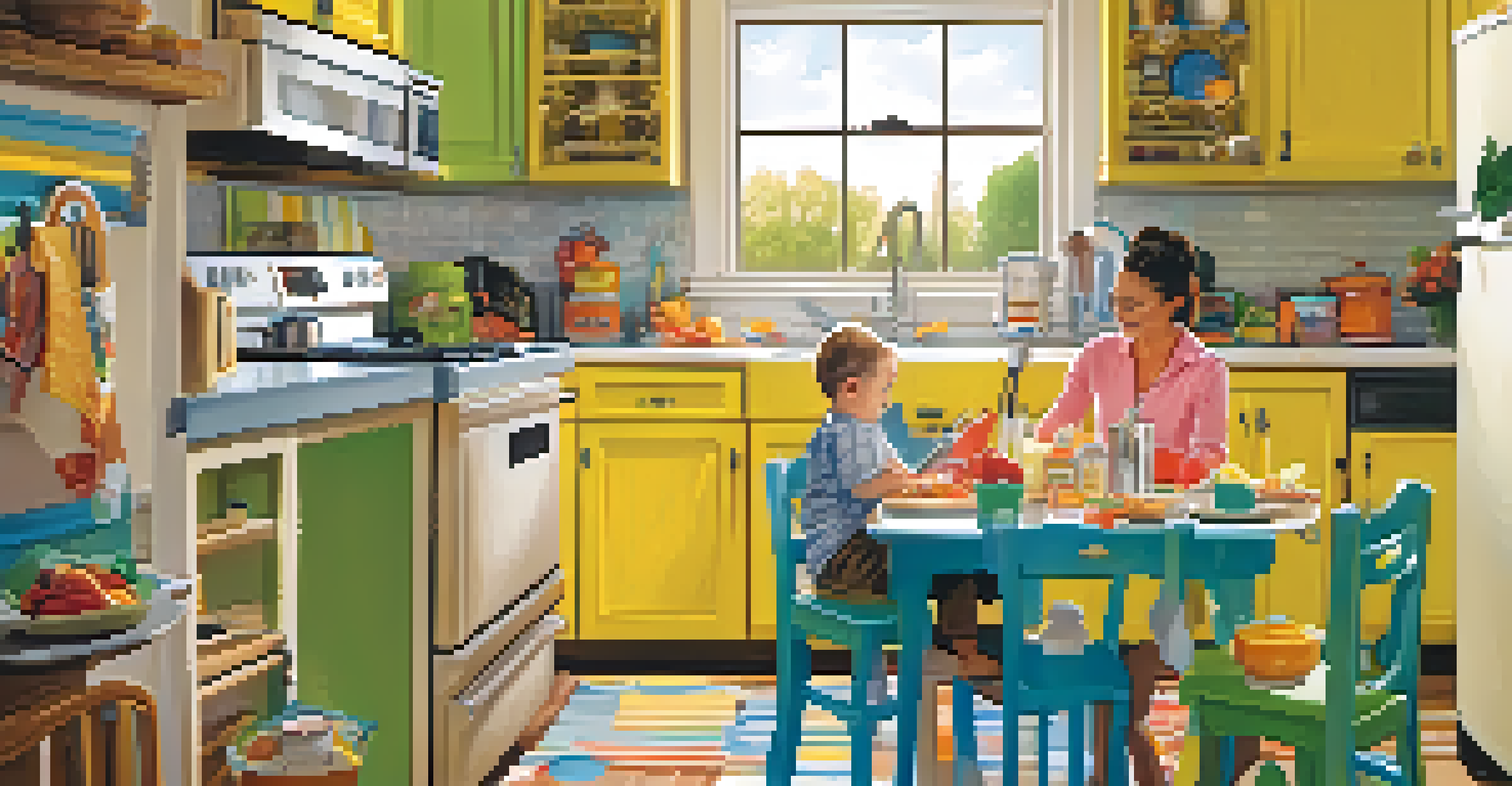How to Create a Safe Environment for Your Baby

Start with a Baby-Proofed Home: Essentials to Consider
Creating a safe environment for your baby begins with a thorough baby-proofing process. This means securing furniture to walls to prevent tipping, using corner protectors on sharp edges, and installing safety gates where necessary. Every corner of your home should be inspected with a critical eye, looking for potential hazards that could harm your little one.
Children are great imitators. So give them something great to imitate.
In addition to physical barriers, it’s crucial to keep harmful substances out of reach. This includes cleaning products, medications, and small objects that can be choking hazards. Consider placing locks on cabinets and drawers that hold anything potentially dangerous, ensuring these items are safely stored away.
Lastly, remember that baby-proofing isn’t a one-time task. As your baby grows and starts to explore, new risks can emerge, so ongoing adjustments are necessary. Regularly reassess your home to adapt to your child’s changing abilities and curiosity.
Choosing Safe Furniture and Decor for Your Baby's Room
When designing your baby's room, opt for furniture that is specifically designed for safety. Look for cribs and changing tables that meet current safety standards, as well as furniture that has rounded edges. Avoid items with small parts that could pose choking risks, ensuring everything is age-appropriate.

In addition to safe furniture, consider the materials used in decor. Non-toxic paints and finishes are essential, as babies spend a lot of time in their rooms, and exposure to harmful chemicals can be detrimental. Research products that are labeled as free from VOCs (volatile organic compounds) for a healthier living space.
Baby-Proofing is Essential
Creating a safe environment for your baby involves thorough baby-proofing and regular reassessment as they grow.
Lastly, be mindful of how you arrange the room. Keep heavy items on lower shelves and always secure larger furniture. A safe layout can prevent accidents and provide peace of mind as your baby begins to explore their surroundings.
Creating a Safe Sleep Environment: Tips for New Parents
A safe sleep environment is crucial for your baby's well-being. The American Academy of Pediatrics recommends placing your baby on their back on a firm mattress with a fitted sheet, avoiding soft bedding, pillows, and toys in the crib. This practice significantly reduces the risk of Sudden Infant Death Syndrome (SIDS).
Safety isn't expensive, it's priceless.
Additionally, consider the temperature of the room where your baby sleeps. A comfortable, slightly cooler environment is ideal, as overheating can also increase SIDS risk. Dress your baby in light sleep clothing and use a fan or air conditioning to maintain a stable temperature.
Lastly, always keep an eye on your baby's sleep position. As they grow, they may roll over on their own, but it’s important to continue placing them on their back for sleep. Regular check-ins during their naps can help ensure they're safe and comfortable.
Keeping Your Baby Safe During Playtime: Guidelines
Playtime is essential for your baby's development, but safety should always come first. Ensure that toys are age-appropriate and free from small parts that could pose choking hazards. Look for labels indicating that toys meet safety standards, and remember to regularly inspect them for wear and tear.
Create a designated play area that is free from potential dangers. This could mean moving breakable items out of reach and covering electrical outlets. Consider using soft mats or carpets to cushion falls, making sure the area is as safe as possible for your baby to explore.
Safe Sleep Practices Matter
Establishing a safe sleep environment, including placing your baby on their back and avoiding soft bedding, significantly reduces the risk of SIDS.
Finally, supervise playtime closely, especially with new toys or activities. Being present allows you to intervene if any safety issues arise and encourages a positive play experience for your baby.
Understanding Baby Safety in the Kitchen: What to Know
The kitchen can be a hazardous place for curious little ones. To keep your baby safe, ensure that all sharp objects, like knives, are stored out of reach. Use child-proof locks on cabinets that contain potentially dangerous items, such as cleaning supplies or hot appliances.
Additionally, be cautious about where you place your baby while cooking. If you use a high chair, make sure it's placed away from hot surfaces and that your baby is securely strapped in. Always keep a watchful eye on your little one, especially when they’re near the kitchen.
Finally, consider safety measures for when your baby becomes mobile. As they start to crawl or walk, it's essential to teach them about kitchen safety, explaining that certain areas are off-limits. This proactive approach can instill good habits while keeping them safe.
The Importance of Monitoring Your Baby's Environment
As your baby grows, their environment will need to evolve to meet their changing needs. Regular monitoring is key to identifying new hazards as they develop new skills, such as crawling or walking. Keep an eye on their play areas and adjust as necessary to ensure ongoing safety.
One effective way to monitor your baby’s environment is by getting down to their level. This perspective can help you spot potential dangers that may not be obvious from an adult's viewpoint. Look for things like cords, sharp edges, or small objects that could be within reach.
Ongoing Safety Monitoring Needed
Regularly monitoring and adapting your baby's environment is crucial to identify new hazards as they develop new skills.
Lastly, consider involving your baby in the process of making their environment safe. As they grow, teaching them about safety can help them understand their surroundings better and develop awareness about potential risks.
Emergency Preparedness: Safety Tips for Parents
Preparing for emergencies is an essential part of creating a safe environment for your baby. Familiarize yourself with potential household emergencies, such as fires or natural disasters, and develop a plan tailored to your family’s needs. This may include identifying safe spots in your home and planning exits.
Additionally, keep essential items like a first-aid kit readily available. Make sure to include items specific to your baby, such as infant pain relievers and a thermometer. Regularly check the kit to ensure everything is up to date and easily accessible in case of an emergency.

Lastly, consider taking a basic child CPR and first-aid course. This knowledge can provide you with the confidence to respond effectively in emergencies, ensuring your baby’s safety and well-being.
Establishing a Routine for Consistent Safety Measures
Establishing a consistent routine can significantly enhance your baby's safety. Regularly scheduled checks of your home for potential hazards can help you stay proactive in maintaining a safe environment. Incorporate these checks into your weekly or monthly cleaning routine, making safety a priority.
Additionally, consider setting specific times for reviewing safety measures related to playtime, sleep, and meal times. With a structured approach, you’ll be more likely to remain vigilant and catch any changes that may pose risks to your baby.
Lastly, involve your partner or family members in this routine. By sharing responsibilities, you’ll not only create a safer environment but also foster a team spirit when it comes to your baby’s well-being.